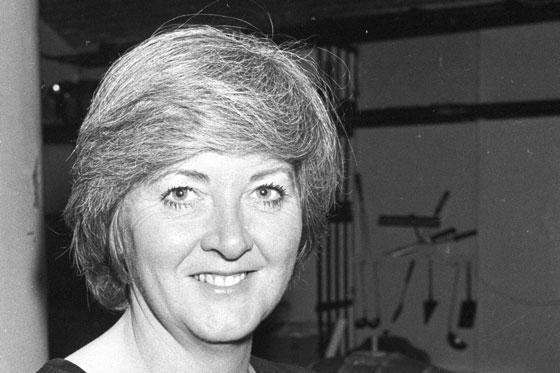
One of the first women to work as a general reporter for The Times in the modern era – and the first to become home news editor – has died. Rita Marshall was aged 73 and had been living at Pickering House, the journalists’ care home in Dorking.
When she joined The Times in 1967, women, even if they had journalistic ambitions, were still all too likely to be found in secretarial roles, from which it might take some time to get a foot on the journalistic ladder.
Marshall was born in south London in 1934 and was educated at Greycoat School, London, and City of London College, Moorgate, where she took the Royal Society of Arts’ diploma in shorthand and typing.
She began her career in 1954 as a reporter on the Stratford Express. Then she all but ran Beaverbrook Newspapers’ Junior Express, as reporter, feature writer, sub and layout woman. In 1956 to the Daily Express as a feature writer and reporter, developing her skills further over the next 11 years.
When she joined The Times from the Express, it was as part of a campaign to bring in reporters from the popular end of Fleet Street, to sharpen up the paper’s sometimes ponderous news coverage.
When one such tabloid journalist followed her on to the paper, she greeted him: ‘Don’t worry, luv. Just put semicolons instead of full stops, and at least two sentences to a paragraph, and working for The Times is just like working for the tabloids.’
One of her first stories for The Times was date-lined, ‘On board HMS Renown, Faslane, June 27.’She wrote: ‘Below the waters of the Sound of Arran this afternoon, the crew of the submarine Renown simulated the firing of a Polaris missile. In fact, we dived for three-and-a-quarter hours.”
The only reference she made to her being a woman was her pay-off line about not leaving mascara on the periscope.
Marshall was appointed home news editor in 1974, and soon demonstrated an approach that was vastly different to that of her predecessors. She called all the reporters ‘darling”, and introduced news other than politics and crime.
Despite her informal manner, she was a stickler for correct attire. One female reporter, arriving for work in mismatching trousers and jacket, was told by Marshall that she had wanted her to cover an event in 10 Downing Street but would not be sending her because she did not look smart enough.
Reporters, Marshall told her, should arrive in the office prepared to be sent out to Buckingham Palace or Downing Street. Above all, she wanted her reporters to get out of the office and do their stories in the real world.
When Charles Douglas-Home became home editor, and wanted a change of news editor, Marshall moved in 1976 to special reports as an assistant editor. She became deputy editor of the section in 1981.
From the Eighties she was the partner of Pearce Wright, the science editor of The Times, after his separation from his wife. He died of cancer in 2005. Suffering from osteoporosis, Marshall subsequently moved into Pickering House, near Dorking, the journalists’ charity home – named after her first editor at the Daily Express, Sir Edward Pickering.
At the time of her death, she was planning to produce a newsletter for the residents.
Email pged@pressgazette.co.uk to point out mistakes, provide story tips or send in a letter for publication on our "Letters Page" blog
